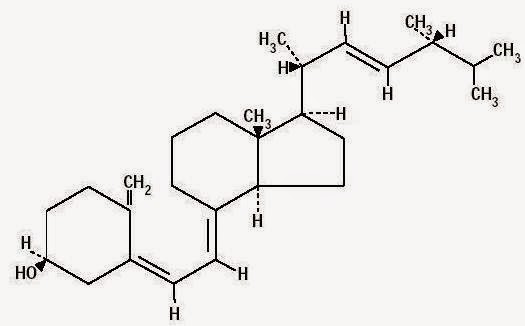Biology
- Dermatology
Term : dermatology Origin: Anc Greek ?????/derma(=skin beneath the epidermis) + -?????/logia(=study of)> ????? --> ?????/desma(=bonds) because skin keeps the body tight > ????/dero(=to peel, to flay)> ?????/logos(=speech, word, discourse)...
- Leprosy
Leprosy is a disease that causes harmful skin sores and nerve damage to the arms and legs. Leprosy has been around since way back then, and it was such a terrifying disease that the people who had it were often shunned and sent out of the country. It is...
- Cell To Cell Tanning
Biology Concepts ? vacuoles, phagocytosis, melanin, cephalopod camouflage Sometimes, the name of an item becomes the sameas its function. Have you ever asked for a Puff when youneeded a facial tissue? But we all ask for a Kleenex.Vacuoles are the same,...
- Structure Of Living Beings.
Differentiation between living beings and inert matter is an easy question, at least in appearance. This is, however, because we usually think about living things that can be clearly seen growing, moving or, summing up, changing. But if we take...
- From The Sun To The Skin, From The Hydrogen To The Titanium.
The SunAccording to the current Harvard stellar classification, the Sun is a G2 star. In this group we can find yellow colored celestial bodies, with temperatures ranging from 4,500 to 6,000K and around 2x10^30Kg of mass. The stars are large spherical...
Biology
Human Beings Love Sun
 |
| Sunlight |
Most humans beings love Sun, love summer, and the images of crowded beaches are typical everywhere when fair weather comes.
Why are we so fond of Sun. Maybe the answer to this question is not easy, maybe each person has their own reasons. But there are three main positive aspects that none of us can avoid.
 |
| Melatonin (by Jakub Kní?e) |
The first one is related to mood. People are happier when the sun shines. There is a physiological reason for this: production of melatonin.
Melatonin is a hormone produced by the pineal gland, in the middle of our head, under the brain. The secretion of this hormone decreases when the brain detects big amounts of sunlight.
So, the amount of melatonin circulating in our blood is lower in summer. And melatonin, at the same time, is an inhibitor of the brain and sexual glands. During winter, our sexual activity is lower and we tend to get depressed more frequently. On the other hand, when the weather is sunny and the days are longer, we have more sexual activity and our depression is much more infrequent.
 |
| Pineal Gland, by LSDB |
The second factor is related to the production of vitamins. Sunlight promotes (in some way, catalyzes) the transformation of cholesterol into colecalcipherol, also called vitamin D.
This organic chemical product is necessary for the absorption of nutrients and production of growth hormones.
In fact, this product is given to children in countries with low levels of insolation, above all when they are two or younger.
The third one is more peregrine: tanned skin is more fashionable. Because, although it is true that nowadays a certain copper bright in your body makes you feel beautiful, this fact has changed along history.
 |
| Vitamin D (by Nwanneka123) |
But firstly, lets analyze what tanned skin means. The dark colour is promoted by an organic molecule called melanin, produced by cells located on the basal layer of the epidermis in our skin. This substance, built up in grains called melanosomes, has a dark brown colour that pigment the surface of our exposed body. The main function of this product is to absorb deleterious radiations of the sunlight, mainly ultraviolet rays.
In fact, what we are doing when we lie on the towel, under the sun, is provoking damage in our skin, and the melanin is a response to that damage. We must remember that ultraviolet rays cause skin cancer and other degenerative diseases, such as actinic dermatitis.
As has already been mentioned, the relation between the colour of our skin and how fashionable we are has changed along the years. The main issue is not your colour, but how the colour of your skin shows your lifestyle.
Nowadays tanned skin is fashionable mainly because popular people, celebrities, rich men or women are those who can spend their time on the shore, sailing their yates, living a perpetual summer, half of the year in the northern hemisphere and in the southern one the other half.
But this has not always been the case. In the first years of the last century, for instance, white skin was by far more fashionable. The reason is simple: dark skinned people were the ones that had to work outdoors (farmers, bricklayers, etc.).
And what if we talk about seventeenth century in France, just before the French Revolution. At that time, pale skin was so fashionable that celebrities spent lots of money buying white cosmetics in order to give them that bright white colour.
 |
| La Liberte Guidant le Peuple |
The paradox is that then they didn't have the chemical substances that we have today to obtain the white colors of our makeup products: titanium dioxide and magnesium or cinc stearate. So they used more simple substances, mainly white powder made up of wheat flour.
High society people required such a large amount of wheat to produce makeup, that the reserves of wheat necessary to produce bread fell dramatically. The low amount of wheat provisions led to a substantial increase of the prices of bread and other basic meals. As a result, poor people started to get hungry due to the corporal decoration of rich people.
How this ends up is well known. I am not suggesting that the increase of prices of food due to the misuse of wheat was the main problem of that French society, it was only one factor. But we can say that, in some way, high society driven so crazy with their white skinned fashion that they finally lost their head.
- Dermatology
Term : dermatology Origin: Anc Greek ?????/derma(=skin beneath the epidermis) + -?????/logia(=study of)> ????? --> ?????/desma(=bonds) because skin keeps the body tight > ????/dero(=to peel, to flay)> ?????/logos(=speech, word, discourse)...
- Leprosy
Leprosy is a disease that causes harmful skin sores and nerve damage to the arms and legs. Leprosy has been around since way back then, and it was such a terrifying disease that the people who had it were often shunned and sent out of the country. It is...
- Cell To Cell Tanning
Biology Concepts ? vacuoles, phagocytosis, melanin, cephalopod camouflage Sometimes, the name of an item becomes the sameas its function. Have you ever asked for a Puff when youneeded a facial tissue? But we all ask for a Kleenex.Vacuoles are the same,...
- Structure Of Living Beings.
Differentiation between living beings and inert matter is an easy question, at least in appearance. This is, however, because we usually think about living things that can be clearly seen growing, moving or, summing up, changing. But if we take...
- From The Sun To The Skin, From The Hydrogen To The Titanium.
The SunAccording to the current Harvard stellar classification, the Sun is a G2 star. In this group we can find yellow colored celestial bodies, with temperatures ranging from 4,500 to 6,000K and around 2x10^30Kg of mass. The stars are large spherical...
